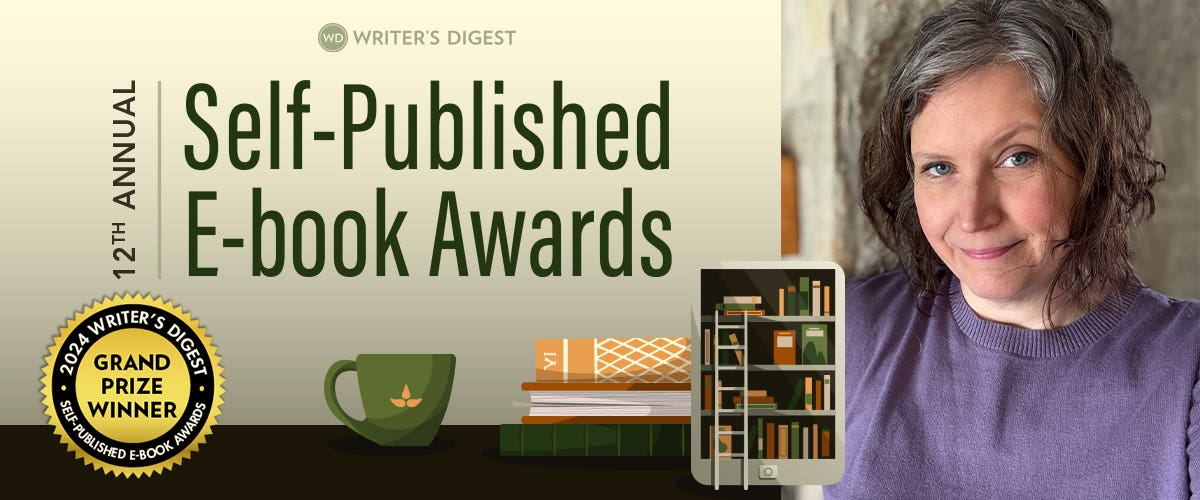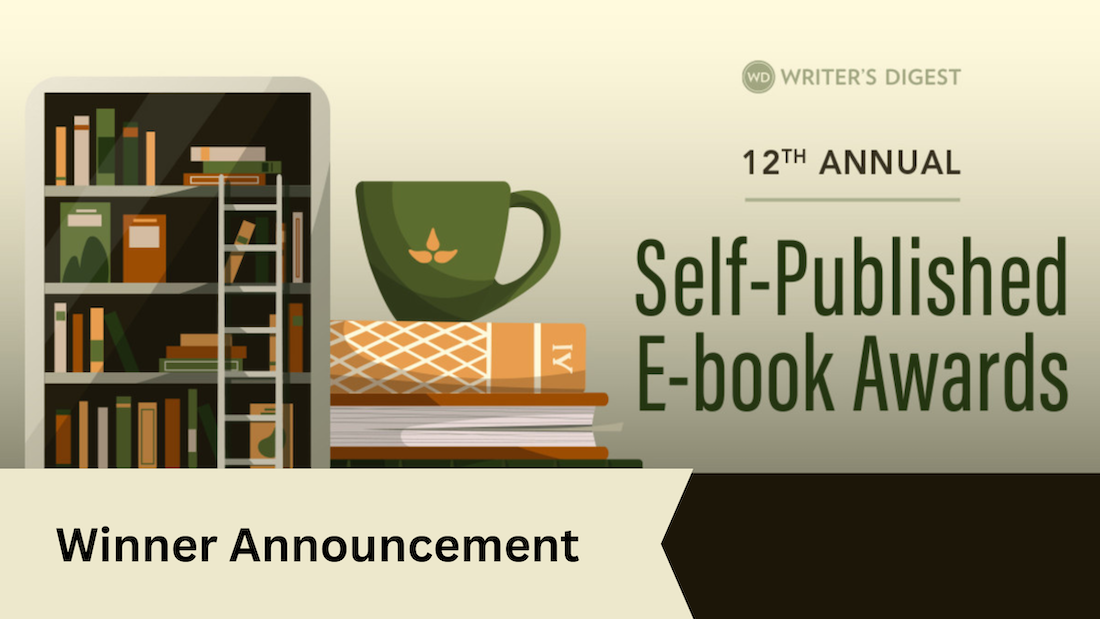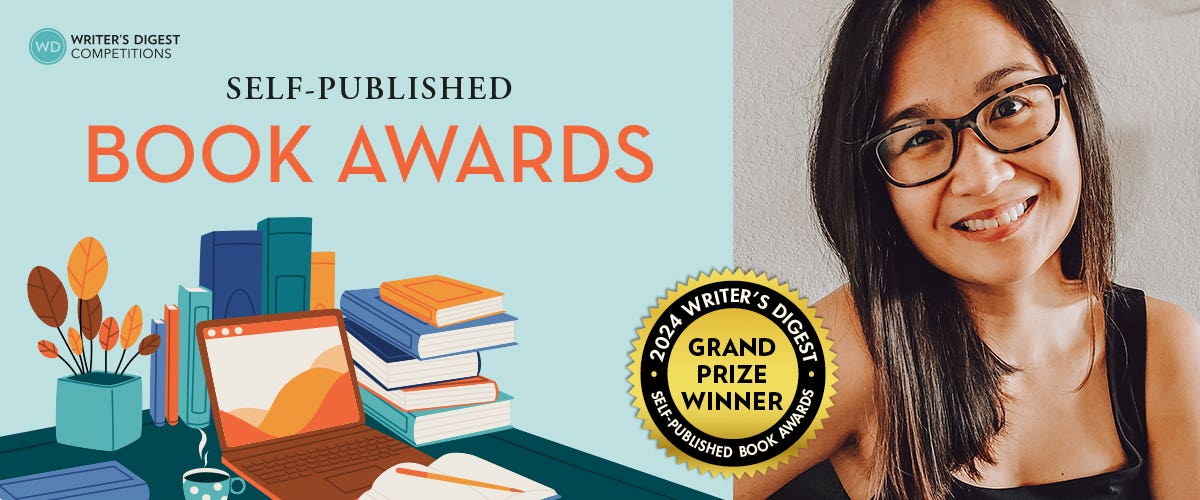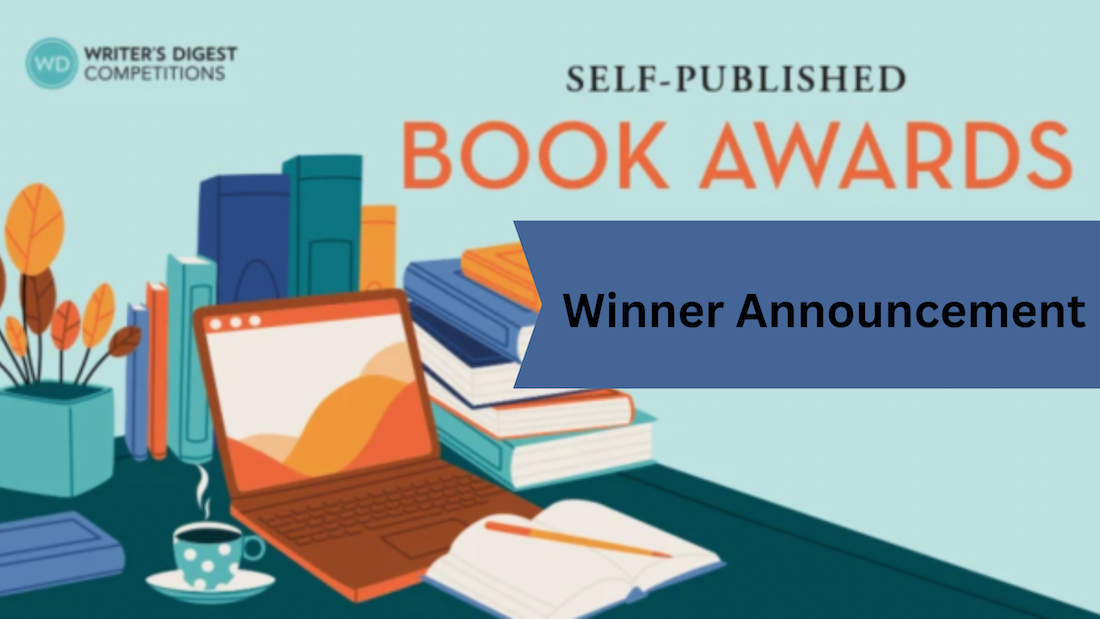Meet Rachel Menard, Winner of the WD Self-Published E-Book Awards
Read a Q&A with Rachel Menard, grand prize winner of the 7th Annual Writer’s Digest Self-Published E-Book Awards.
As soon as I began reading the young adult fantasy Steel Hand, Cold Heart by Rachel Menard, I knew it had to be the Grand Prize winner of the 7th Annual Writer’s Digest Self-Published E-Book Awards. The anti-heroine Carina drew me in with her determination to prove her worth and transformation into a warrior—complete with replacing her hand with a steel hand for battle.
Carina is an outsider in the Viking-based matriarchal community of the Daughters of Hel—a society that appeases the goddess Hel by raiding towns and killing their people. When Carina is kidnapped, she must choose between proving her worth by killing her captors or forging her own path.
Menard’s winnings include $5,000 and a trip to the Writer’s Digest Annual Conference in New York City. She sat down with WD to talk about Steel Hand, Cold Heart.
How did you get the idea for this book?
I wrote Carina into a novel before. She was in this enemies-to-lovers revenge story and made the hand for herself to replace the hand she lost in a sword fight. I shelved that book, but I really liked the character. So I rewrote her into this story, a different situation. I gave her the supporting cast, which helped reveal her more.
What drew you to Carina?
I like anti-heroines. I don’t know if I’d call her likable, but she has redeeming qualities.
How many novels have you written?
I have 10 shelved. There’s one I really liked the world I created, so I’m changing the scenario and making it more of an urban fantasy than fantasy. There’s another fantasy I’m turning into a thriller. So I’m taking pieces of things I liked and putting them together, since it worked for Steel Hand.
What draws you to YA?
Your teens are such a transition time with many firsts—like first love, first heartbreak—and it makes good drama.
How do you develop characters?
I write, rewrite, and let characters reveal themselves, doing the old adage of “put them in the situation, and how would your character react to that situation?”
What challenges did you have writing Carina?
The biggest challenge is making an anti-heroine likable. You have to do something in the beginning to make that character someone you understand. From the beginning, Carina questioned herself and had a bully. As the reader, you have an association with her, feel for her because she doesn’t think she’s good enough and she’s got other people telling her that. That helps ease later on if she does something terrible, you don’t hate her.
What was the world-building like?
I wanted to do something Viking based. I got books on Viking history and wanted to see a feminist story. I read passages about [the goddess] Hel; I thought it would make sense that women Vikings would worship a goddess. I also read about Viking life and took notes on the food they ate, what their houses looked like, where they raided. The Viking age was over hundreds of years, so I took what I wanted from those years and created my world from that.
What led to this book?
I’d published a couple of short stories, but I’ve been writing for a while. Mostly YA sci-fi and fantasy. I’ve had agents but no sales. I felt like this book was the one and I decided to take it as far as possible and not give up on myself.
Why did you feel this book was the one?
I just really liked it. All my beta readers really liked it. It felt different. I was at a writing conference and one of the speakers said, “Don’t reject yourself.” I have a lot of shelved books because I’ve rejected myself in the past. I thought if this doesn’t succeed, I don’t want it to be because of me.
Is that why you decided to self-publish?
Pretty much. I passed on going to small publishers because I have a marketing background, and I don’t expect to make money off this. I’m just using it as a tool to practice book marketing and build a community. Doing my own book marketing, I can see if it works on getting sales or Goodreads adds and I know what works and what doesn’t.
What was your timeframe?
It was 18 months from when I started making Viking notes to when I published it. There was a year of writing, and I had a lot of the character work done from that previous novel that I was able to copy.
What was the biggest surprise you had writing and publishing this book?
I feared people would hear self-published and run the other way, so I wrote arguments about why it’s a good book. Then I found I didn’t have to—it didn’t seem to bother book bloggers that it was self-published. They just were like, “I like the synopsis, I wanna read this, send it to me.” The hardest thing about self-publishing is you put it out with only yourself saying it’s good. If I hadn’t set my goal to take it to the end, I might have shelved it like the other ones.
Do you have any projects up next?
I signed with an agent since Steel Hand. It’s another YA fantasy. It has character that is worse than Carina, but I feel I get away with it because it is a multi-POV. I have two nice characters and this wicked one. I like showing a villain origin story or trying to humanize the villainess. The villain is the hero in their own stories. So I like to look at that and see why a person is acting the way they are.
Can you tell me about your writing and publishing process? Did you have help?
I used a cover designer. It was important to me to have an eye-catching cover. She did the art, but I did the layout with the text. Then I did my own interior layout work. I didn’t get an editor, but I had a lot of beta readers and some professional editors gave me notes and I incorporated those changes. So it was in good shape. Of course, after my first version, I found typos. But with Amazon KDP, you can upload a new version if you find mistakes.
How do you find beta readers?
Mostly on Twitter, with #writingcommunity. I’ve met a lot of good writing friends through there.
How do you know if a beta reader is a good match?
I don’t until I have them read a few pages. A lot of people do one chapter so you can see their feedback. I’m also pretty good at picking out what I want to use from someone’s critique and what I don’t want to use.
About Cassandra Lipp
Cassandra Lipp is managing editor of Writer's Digest. She is the author of Queen City Records, which tells the stories behind the indie record shops of Cincinnati and Northern Kentucky. Her work has appeared in Greener Pastures, The Belladonna, Little Old Lady, Points in Case, and Ohio's Best Emerging Poets 2019. Follow her on Twitter @Cassie000000.








